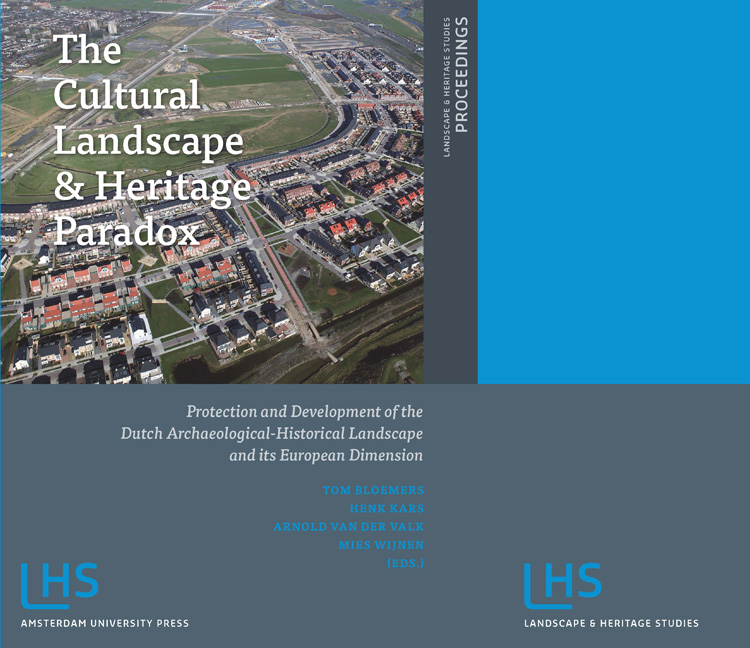 The Cultural Landscape and Heritage Paradox
The Cultural Landscape and Heritage Paradox Book contents
- Frontmatter
- Contents
- Preface
- I INTRODUCTION
- II INSIGHTS AND PROSPECTS OF ARCHAEOLOGICAL-HISTORICAL LANDSCAPE STUDIES
- III LINKING KNOWLEDGE AND ACTION
- IV IMAGINATION - FACTS AND CONSTRUCTIONS
- V SHARING KNOWLEDGE - STORIES, MAPS AND DESIGN
- VI SYNTHESIS AND CONCLUSIONS
- VII MANAGEMENT OF KNOWLEDGE
- VIII AGENDA FOR THE FUTURE
- IX SUMMARY
- X APPENDIX
- Subject Index
- Index of Places and Regions
7 - Past Pictures. Landscape Visualization with Digital Tools
Published online by Cambridge University Press: 21 January 2021
- Frontmatter
- Contents
- Preface
- I INTRODUCTION
- II INSIGHTS AND PROSPECTS OF ARCHAEOLOGICAL-HISTORICAL LANDSCAPE STUDIES
- III LINKING KNOWLEDGE AND ACTION
- IV IMAGINATION - FACTS AND CONSTRUCTIONS
- V SHARING KNOWLEDGE - STORIES, MAPS AND DESIGN
- VI SYNTHESIS AND CONCLUSIONS
- VII MANAGEMENT OF KNOWLEDGE
- VIII AGENDA FOR THE FUTURE
- IX SUMMARY
- X APPENDIX
- Subject Index
- Index of Places and Regions
Summary
ABSTRACT
‘A picture is worth a thousand words.’ Computer software and digital tools are increasingly used for the production of scientific and correct, data-based landscape visualizations. Some of the applied techniques are following old and time-tested rules of visual communication while others explore new fields of visual imagination. Many results of digital visualization depict future developments or scenarios but comparatively few generated pictures are related to the past. What can be used for projections of the future can also be utilized to look into the past. Past pictures can contribute to a better understanding of a wide range of scientific works. Archaeologists and historians by now definitely profit from the canon of available technology. The paper discusses the potential of state-of-the-art visualization techniques and presents selected scientific projects of past-related sophisticated landscape visualization.
KEY WORDS
Landscape visualization, before-after-representations, 3D vegetation, interactive promenade, 3D landscape models
INTRODUCTION
The lion's share of visualizations in the vast field of digital representation depict the future. Designers, investors and financiers are focusing on planned or projected results. Sciences however, most notably archeology and history, are also interested in visual representations and visual models of things from the past that became lost, buried or are uncertain. Landscape visualization with advanced digital tools can contribute to the understanding and exemplification of past landscapes and natural as well as man-made settings of all scales.
Landscape planning and design are not exactly known for being cutting-edge disciplines, utilizing newest technologies or to be first to apply available state-of-the-art tools. In these disciplines the theme ‘visualization’ is often still equated with 2D cartography and perspectives. Well-established Geographic Information Systems (GIS) even promoted this common perception because the 3D potential of this technology is only marginally utilized. In most ecological landscape projects the world is still considered as a flat disc which evokes quite a negative effect on the spatial sense and imagination and consequently on the acceptance of people and decision-makers. Furthermore, there is the difficulty that a multiplicity of space-oriented problems can only be represented in a rudimentary way by graphical illustration if they are not even invisible and thus undepictable (Paar/Rekittke 2003).
- Type
- Chapter
- Information
- The Cultural Landscape and Heritage ParadoxProtection and Development of the Dutch Archaeological-Historical Landscape and its European Dimension, pp. 309 - 320Publisher: Amsterdam University PressPrint publication year: 2010
- 1
- Cited by
